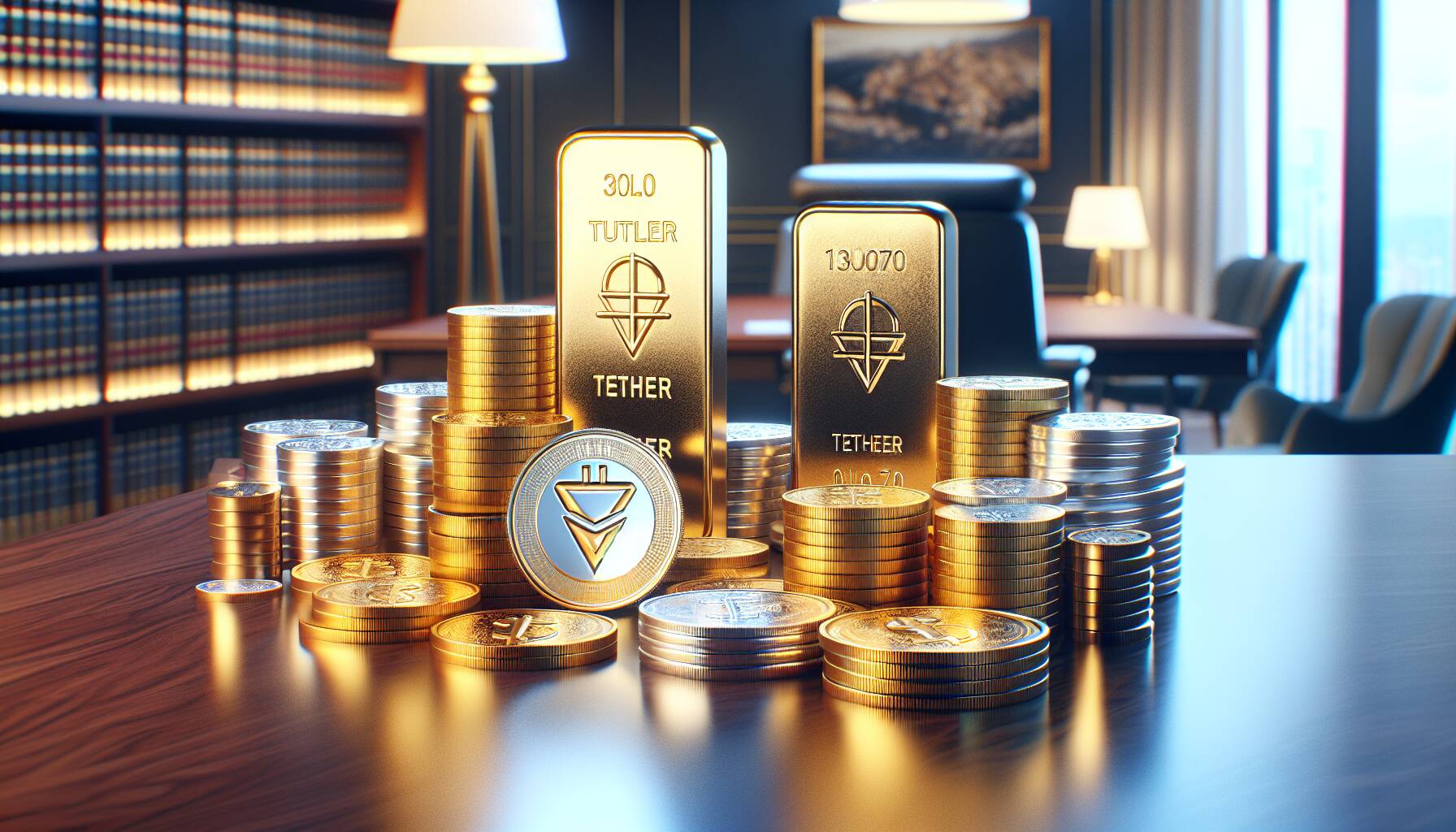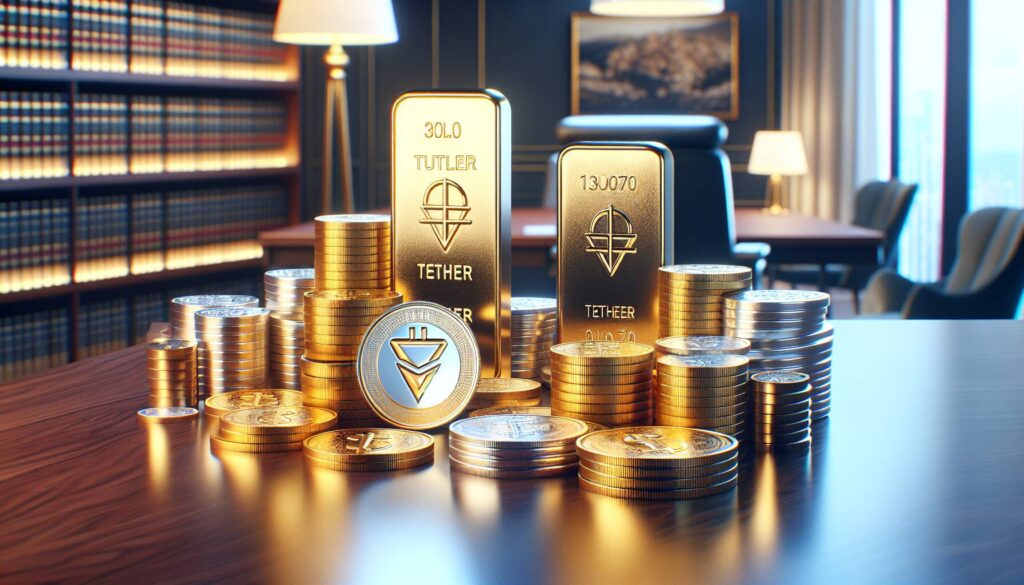In a significant move within the cryptocurrency landscape, Tether, the issuer behind the widely-used stablecoin USDT, has announced that its investment arm has acquired a minority stake in Elemental Altus, a publicly-listed company focused on precious metals. This strategic investment is part of Tether’s broader plan to diversify the assets backing its stablecoin, which currently holds a remarkable market capitalization of $155 billion.
Tether purchased over 78 million shares of Elemental from La Mancha Investments, a mining investment firm based in Luxembourg. Following the announcement, shares of Elemental surged almost 23%, reflecting the market’s positive response to Tether’s confidence in the fundamentals of gold as an investment. As it currently stands, Tether’s stake is valued at approximately $88 million, representing a 33.7% ownership in the company.
“Elemental’s royalty model provides diversified exposure to gold production around the world, aligning strategically with our vision for Tether Gold and future commodity-backed digital asset infrastructure,” said Paulo Ardoino, Tether’s CEO.
Tether’s venture into precious metals is described as a “dual pillar strategy,” which complements its substantial holdings of Bitcoin, exceeding $10 billion. This diversification comes at a crucial time when regulatory frameworks concerning stablecoins are anticipated in the U.S., with potential impacts on how issuers like Tether structure their asset holdings. Notably, earlier predictions from JPMorgan suggested that Tether may need to adjust its Bitcoin portfolio in alignment with upcoming compliance requirements.

Tether’s Investment in Elemental Altus
Key points regarding Tether’s recent investment move and its implications:
- Minority Stake Acquisition
- Tether Investments has acquired a minority stake (33.7%) in Elemental Altus.
- Acquired 78,421,780 common shares from La Mancha Investments.
- Diversification Strategy
- Aims to diversify the assets backing its stablecoin, USDT.
- Expanding into tangible assets and precious metals, notably gold.
- Market Impact
- Elemental’s shares rose nearly 23% to 1.77 Canadian dollars following the announcement.
- The stake is valued at approximately $88 million.
- Future Compliance
- Preparation for upcoming regulations on stablecoins in the U.S.
- Possible need to diversify assets further, including potential sale of BTC.
- Importance of Gold
- Reflects Tether’s confidence in the fundamentals of gold in financial markets.
- Aligns with the company’s vision for Tether Gold and future digital asset infrastructure.
This investment strategy may impact readers by influencing the stability and trustworthiness of USDT as a stablecoin, particularly if they rely on cryptocurrency for transactions or investments.
Tether’s Strategic Move: A Dive into Precious Metals
Tether’s recent investment in Elemental Altus positions it strategically in the evolving landscape of stablecoins and precious metals, creating both opportunities and challenges for the company and its stakeholders. This move stands in stark contrast to other issuers in the stablecoin market, who may be heavily reliant on cryptocurrencies without such diversification efforts.
Competitive Advantages: By acquiring a substantial stake in Elemental, Tether not only stabilizes its asset backing in a volatile crypto environment but also aligns itself with the intrinsic value of precious metals like gold. The surge in Elemental’s stock value post-announcement indicates market confidence in this direction, suggesting Tether could effectively attract more institutional investors interested in less risky assets. With regulatory scrutiny on stablecoins intensifying, Tether’s proactive approach to incorporating tangible assets may position it favorably against competitors who have yet to diversify.
Potential Disadvantages: However, this shift towards commodities comes with its own set of risks. The volatility associated with precious metals could introduce unpredictability in Tether’s asset management. Additionally, as cryptocurrency regulations evolve, the necessity for maintaining a balanced and compliant asset portfolio may lead to challenging trade-offs, such as potentially selling off existing Bitcoin holdings. This could engender discontent among crypto purists who value a strong allegiance to digital assets.
Impact on Stakeholders: Tether’s venture could greatly benefit gold investors and those seeking a hedge against market fluctuations. Institutions that thrive on a diverse asset base may see Tether’s actions as a bullish signal, enhancing trust in stablecoins as reliable investment vehicles. Conversely, this move may create friction within the crypto community, particularly among those who view stablecoins as purely digital constructs not needing traditional asset backing.

















